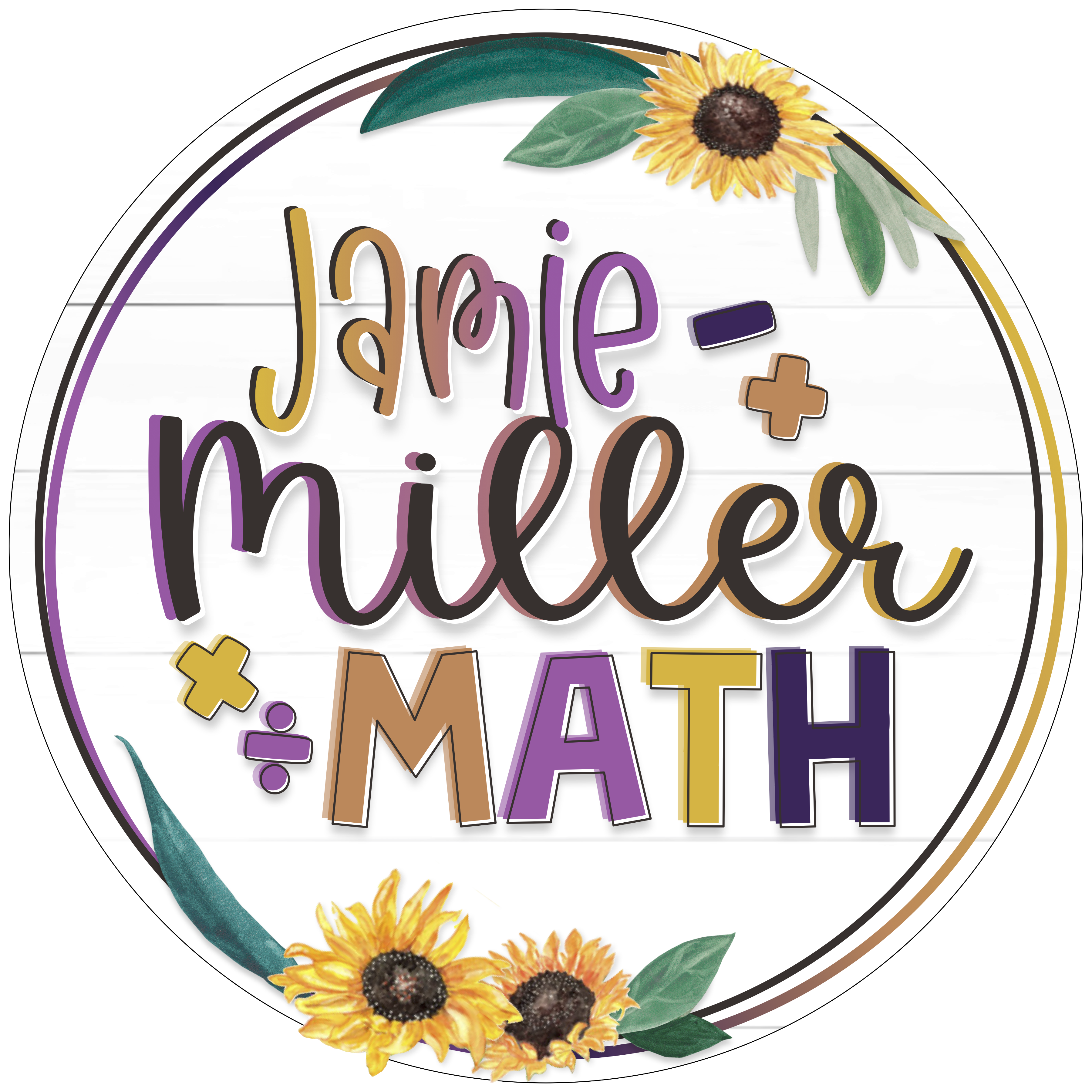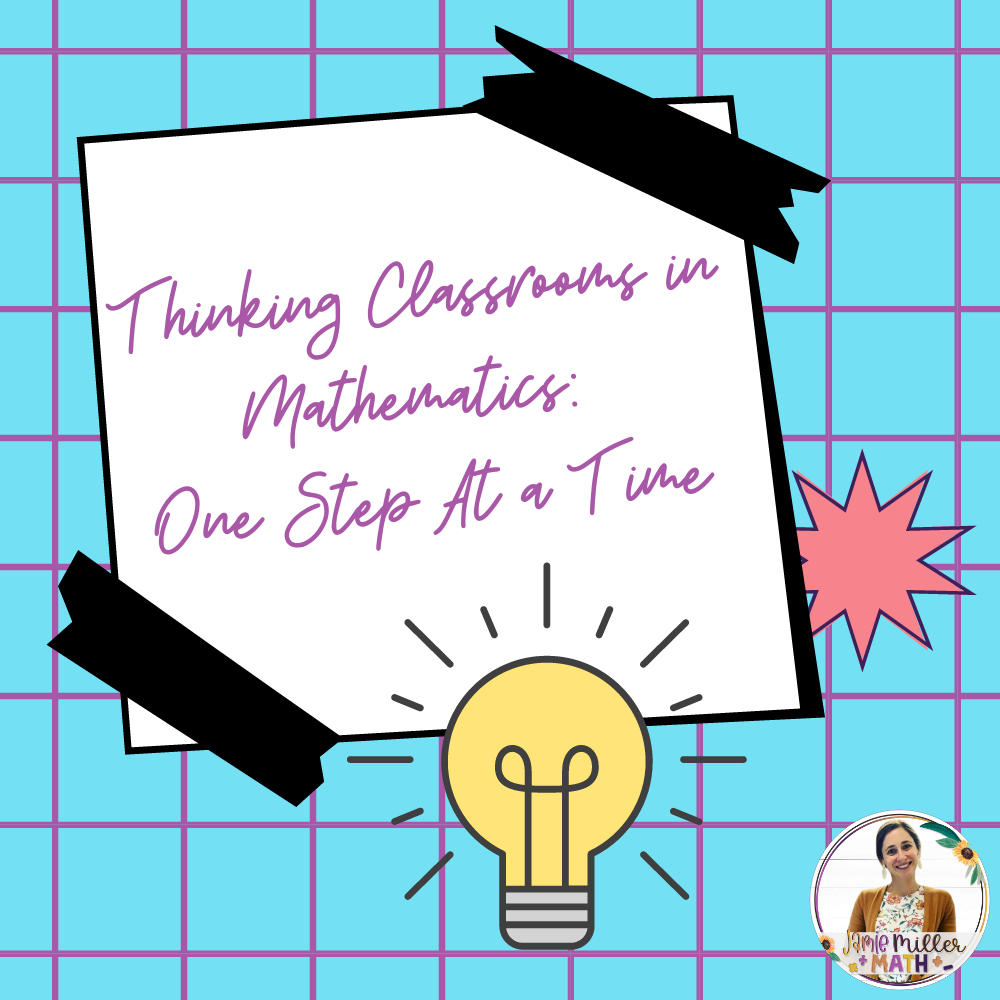
Thinking Classrooms in Mathematics: One Step At a Time
The 2022-2023 school year marks the year that I started implementing elements of a thinking classroom in my mathematics classes. If you haven’t read Building Thinking Classrooms in Mathematics by Peter Liljedahl, I highly recommend it! It is hands-down the best professional development book I’ve read. Utilizing Peter’s 14 principles, we can truly create classrooms where students are taking ownership of their thinking and learning, which in turn results in higher engagement and achievement, a deeper understanding of concepts, and a love of math.
My biggest tip for implementing thinking classrooms is to start small by slowly implementing principles at a pace that works for you, your students, and your classroom. This might take days, months, years, etc. Implementing all 14 principles at once is an arduous (but extremely valuable) task and I hope to get there one day but for now, I am taking baby steps and trying to add more principles as the year goes on. Each year, I will plan to add to what I am already doing.
Principles of Thinking Classrooms
Below are some principles I am implementing in my classroom now:
- Defronting my classroom- I love having table groups, small group tables, and vertical whiteboard spaces. This helps to shift the focal point from the teacher to the student, allowing for more discussion and collaboration.
- Using random collaborative groups- I think there is something really valuable about students seeing and experiencing that the math groups are genuinely random. This has helped to encourage more student participation, confidence, and a growth mindset.
- Vertical whiteboard spaces- I love watching students work together at the vertical whiteboard spaces. The math talk and discussions are so much more powerful than anything I could be teaching whole-group. I just wish I had a larger classroom to be able to spread the whiteboard spaces out more. Groups being right beside other groups isn’t ideal and does lead to some behavior issues.
- Thinking tasks- I love kicking off each lesson with a thinking task that generates student thinking and self-discovery rather than me telling them how to do the steps to solve a particular skill/problem.
- Thin-Sliced Problems- I am slowly replacing my normal guided math station with thin-sliced problems that increase in difficulty. Students solve one problem at a time, building confidence and skills.
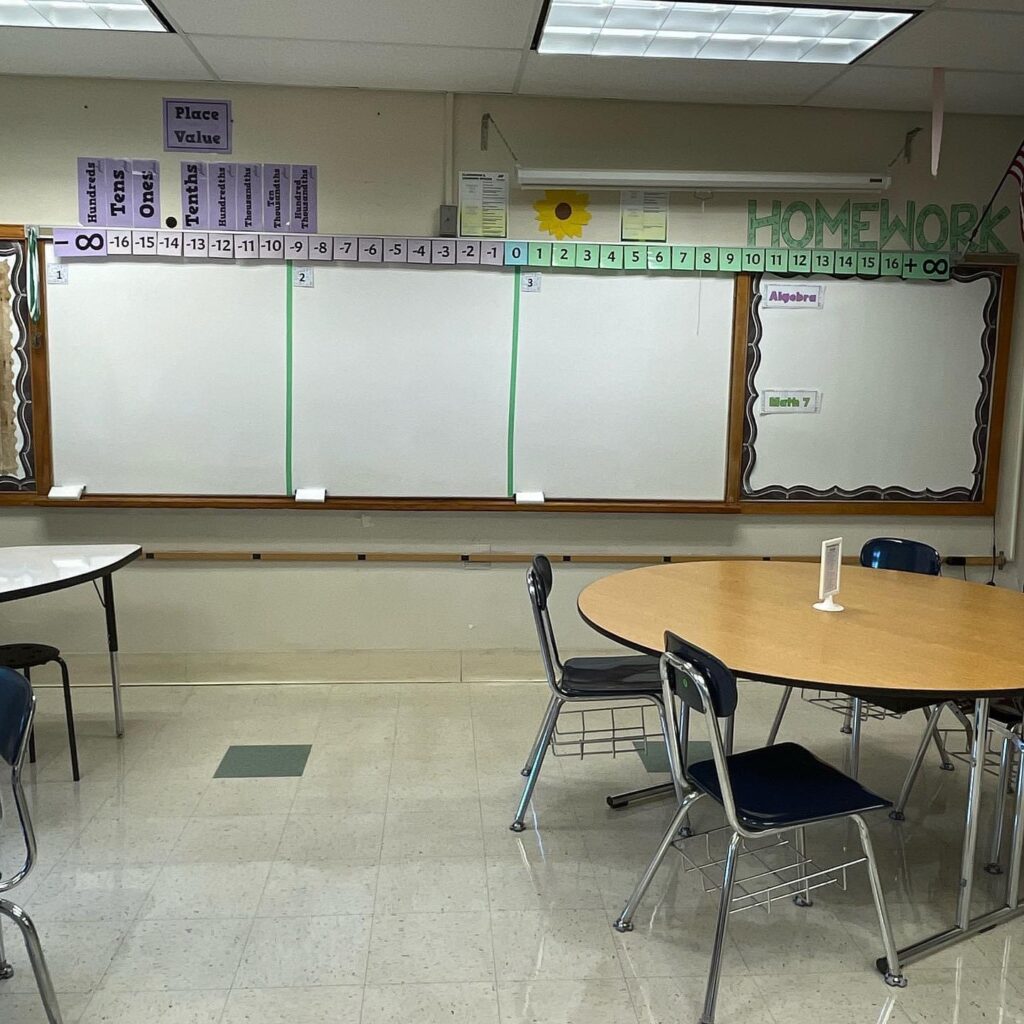
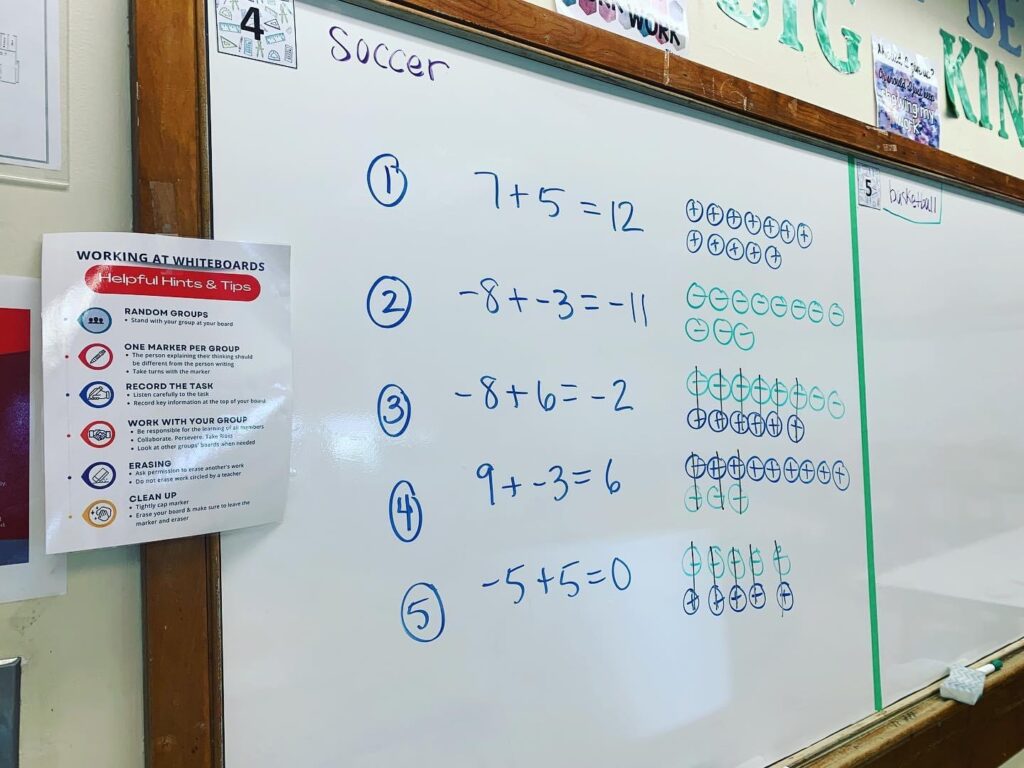
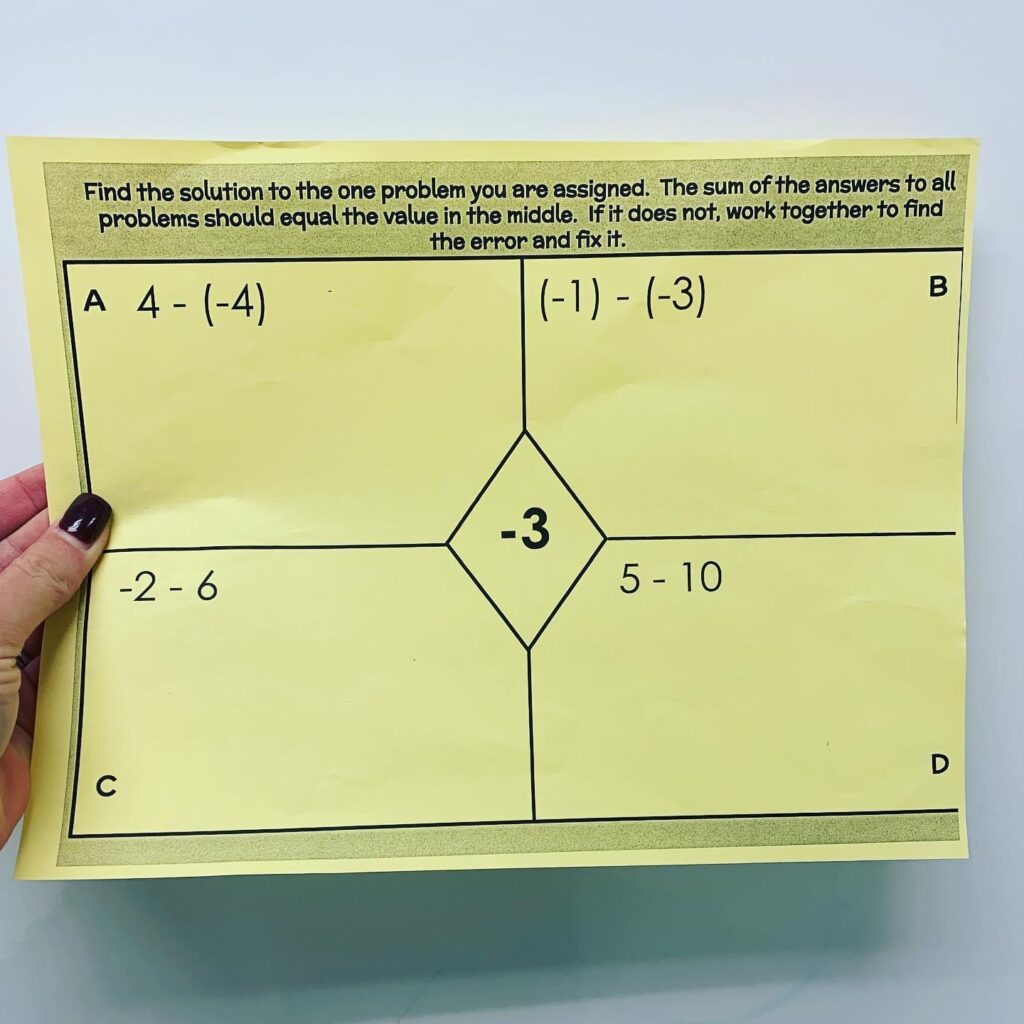
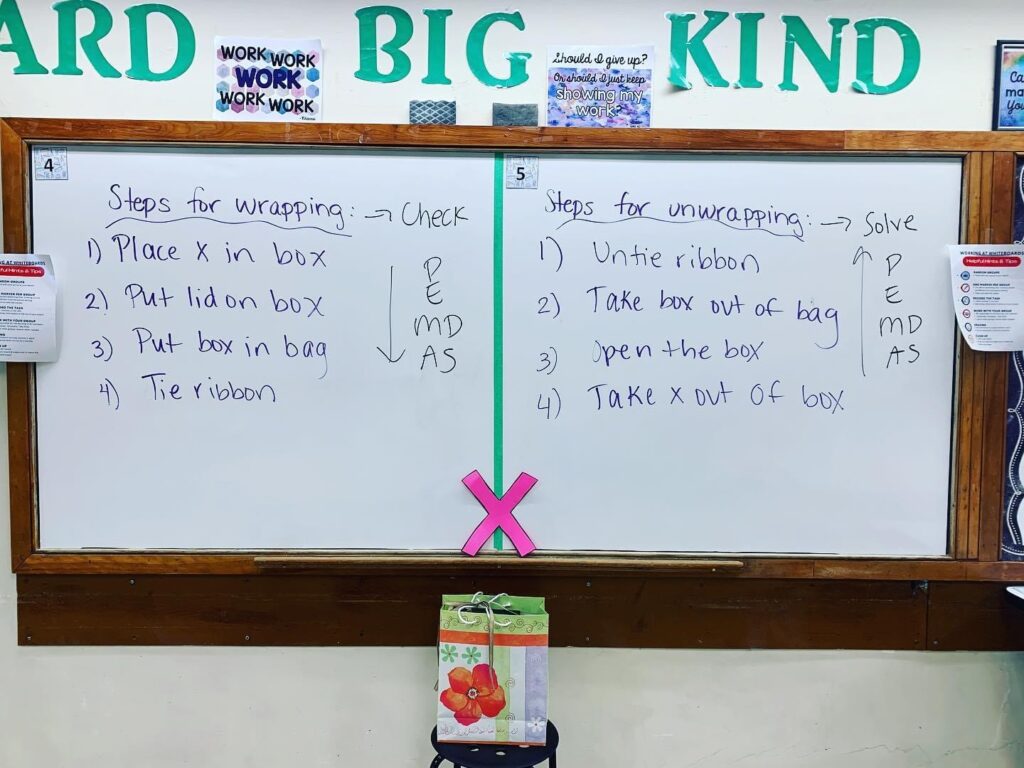
Math Workshop and Thinking Classrooms
Am I still using the math workshop model and guided math? Absolutely! I find value in both the thinking classroom principles and working with students in small groups to differentiate and individualize instruction.
A typical schedule for my math 7 classroom looks like the following:
- Monday- Thinking task and notes (My math 7 coworkers and I are currently revamping our notes to make these more aligned to thinking classrooms principles.)
- Tuesday- Practice
- Wednesday & Thursday- Math workshop stations and guided math
- Friday- Assessment
Thin-Sliced Problems & Guided Math
This year (2023-2024), I am working hard to incorporate thin-sliced problems into guided math. Students receive one problem at a time to complete on our whiteboard table. Answers can be found on the back of each problem so it is self-checking practice and helps to build student confidence. I am working with students, asking probing questions about work and process, and supporting students where needed. Questions are leveled by difficulty: mild, medium, and spicy. Grab this FREE and editable organizer to help create your own thin-sliced problems to use during small group instruction, individual practice or group practice.
Final Thoughts
I still have a lot of work to do in terms of creating a thinking classroom but am pleased with the progress I am making so far! Baby steps are key (at least for me). f you are a middle school math teacher that utilizes BTC in your classroom, I would love to connect with you! Feel free to share your experiences below!


